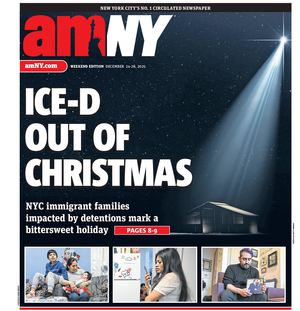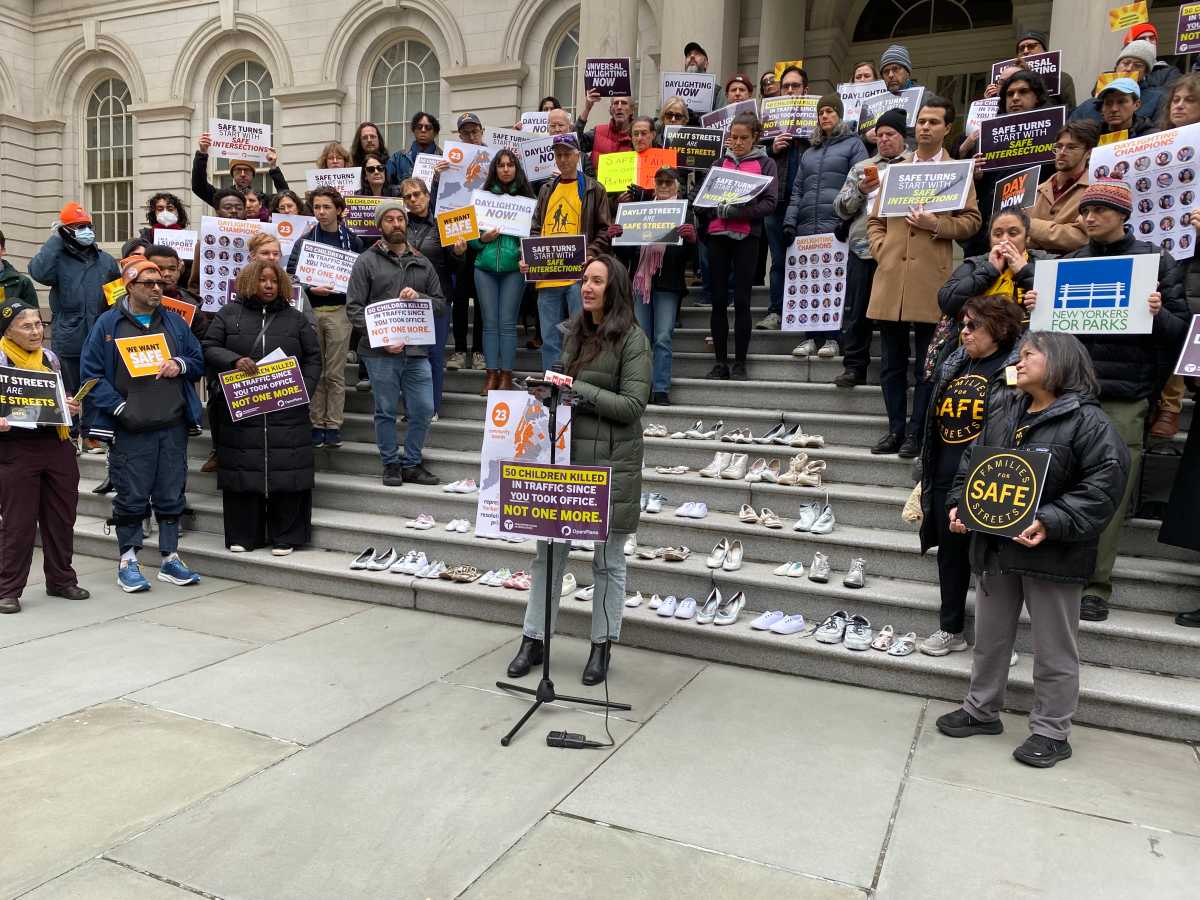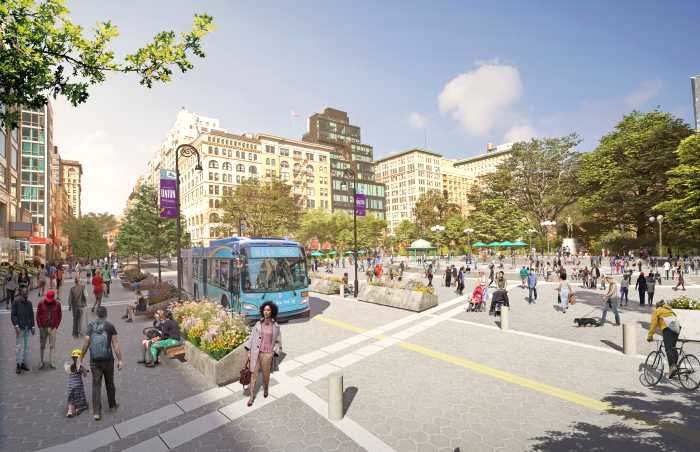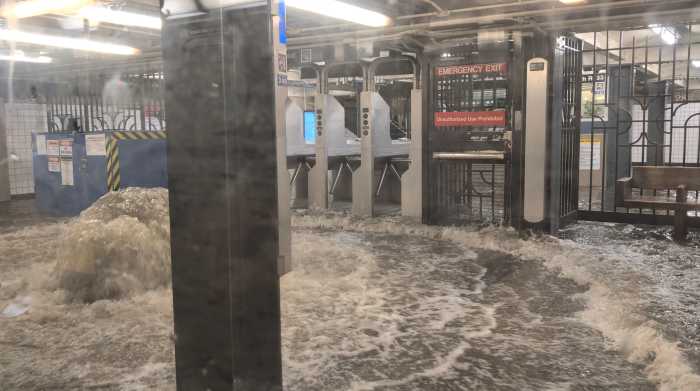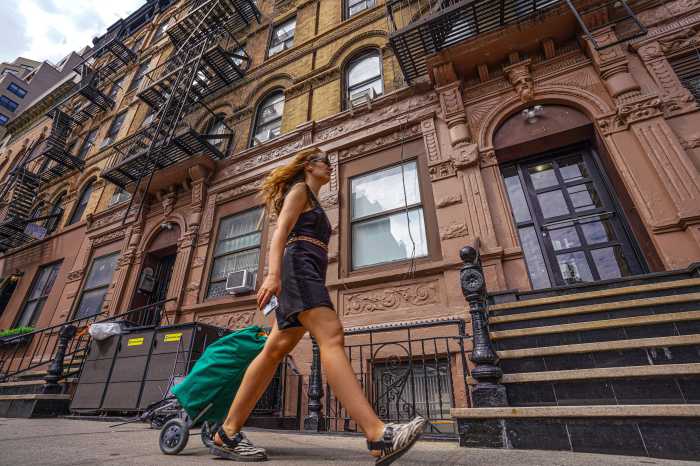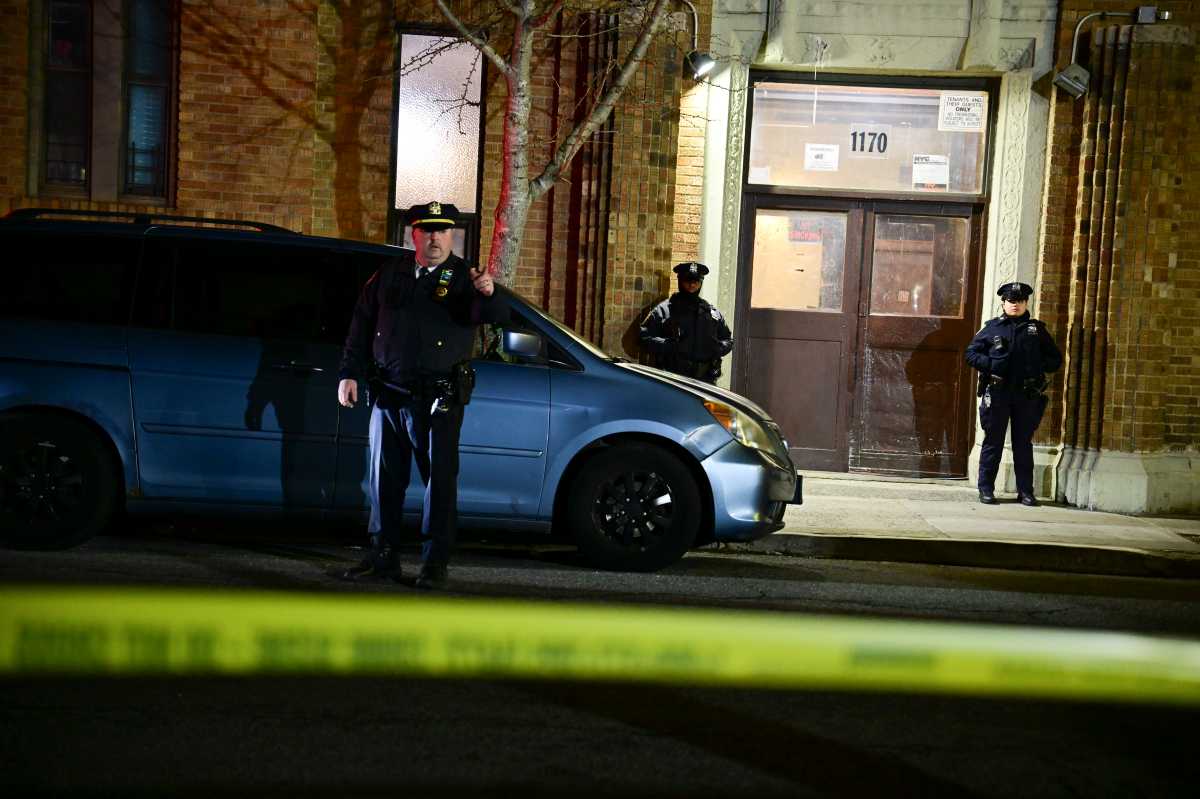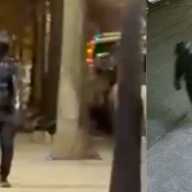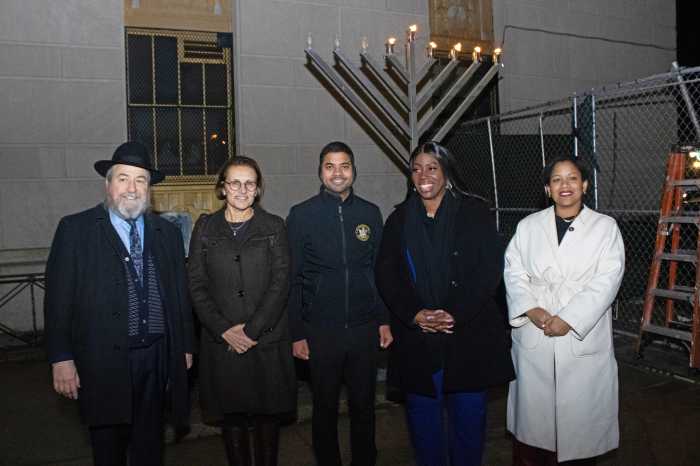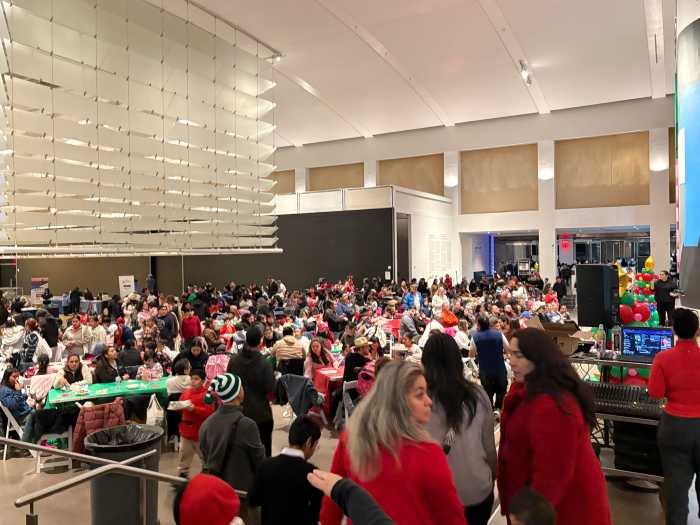Nearly a hundred advocates and families of children killed in traffic gathered on the steps of City Hall on Wednesday to make streets safer, zeroing in on “universal daylighting,” by banning parking near intersections.
Daylighting is the process of repurposing city curb space closest to an intersection to improve visibility for drivers, pedestrians and cyclists. Currently, most intersections in NYC allow parking up to the crosswalk, which advocates say decreases visibility for everyone on the road.
The protestors urged the City Council, with only about one month left in its current term, to pass Intro. 1138, which would prohibit parking or standing a vehicle within 20 feet of a crosswalk at an intersection.
Without universal daylighting, pedestrians can’t see drivers, and drivers can’t see pedestrians until they’re in the middle of the road, advocates at the rally said.
“Since this City Council term began in 2022, 50 children have been killed in traffic crashes in NYC,” Ben Furnas, executive director of Transportation Alternatives, said in front of shoes displayed on City Hall’s steps to represent the fallen lives.
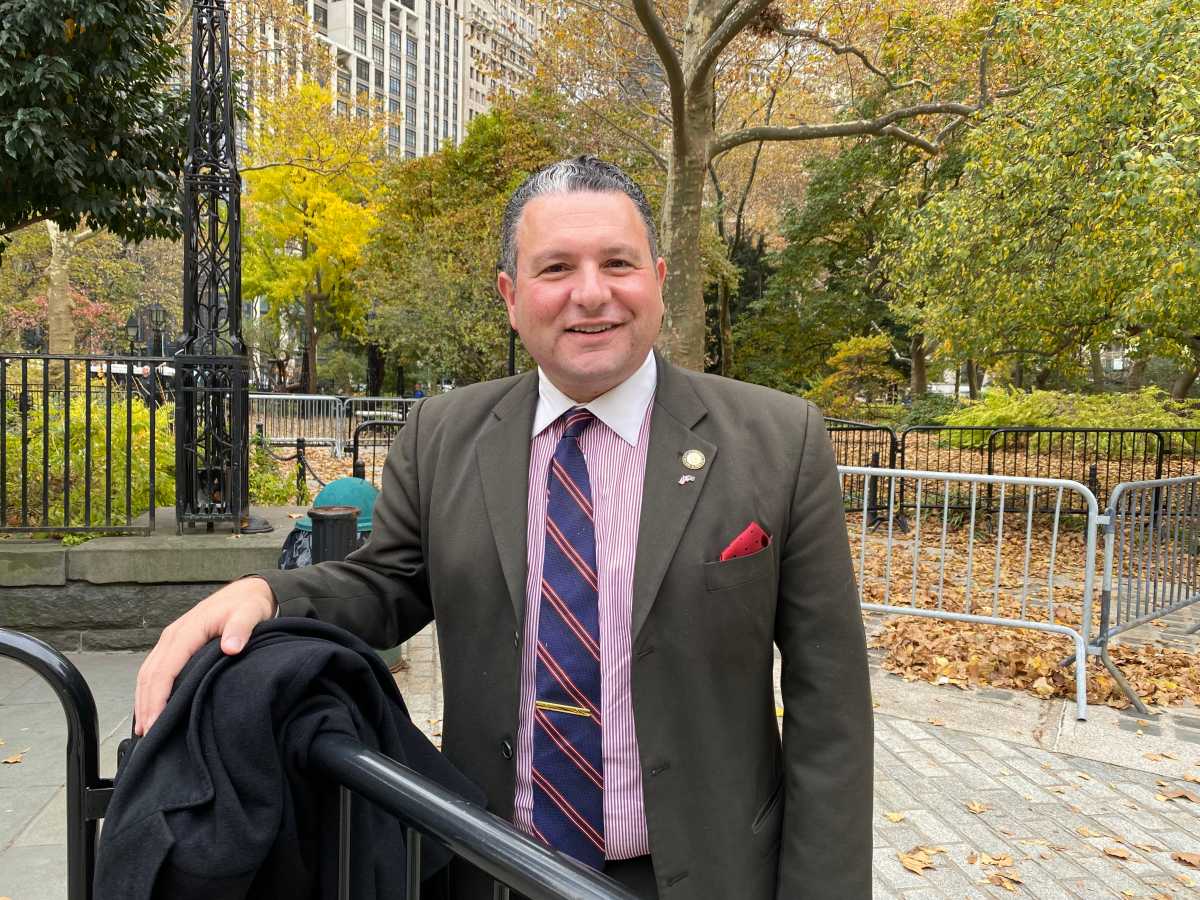
According to the advocacy group, walking home from school is the deadliest time for students; being struck by a car is the leading cause of injury-related death for New York City children under 14, the group reports.
Intro. 1138, if passed into law, would require the NYC Department of Transportation (DOT) to implement physical barriers — like planters or bike racks — at a minimum of 1,000 intersections per year.
“Daylighting is already the law in New York State, and it’s about time that NYC complies. 62% of pedestrian deaths happened at an intersection in the first six months of 2025. We need Intro. 1138 to speed up the process of making our streets and crossing safer for all New Yorkers,” said Queens Council Member Julie Won, who sponsored the legislation.
DOT officials, however, are opposed to the measure. In January, the agency published a report which indicated that universal daylighting only offers a pittance of traffic safety relief, and that is mostly the case when hardened daylighting is applied “situationally” rather than universally.
While the agency said it is committed to making streets safer, officials noted that their data speaks volumes, adding that universal daylighting could lead to even more traffic-related injuries.
“We appreciate the advocates who support this bill, but we spent two years reviewing data from thousands of intersections across New York City and found that universal daylighting would not improve safety and could cause up to 15,000 additional traffic injuries per year,” a DOT spokesperson said. “There isn’t a one-size-fits-all answer to street safety, and we will continue to do what works best in the places where it works best so that we can save lives and keep people safe.”
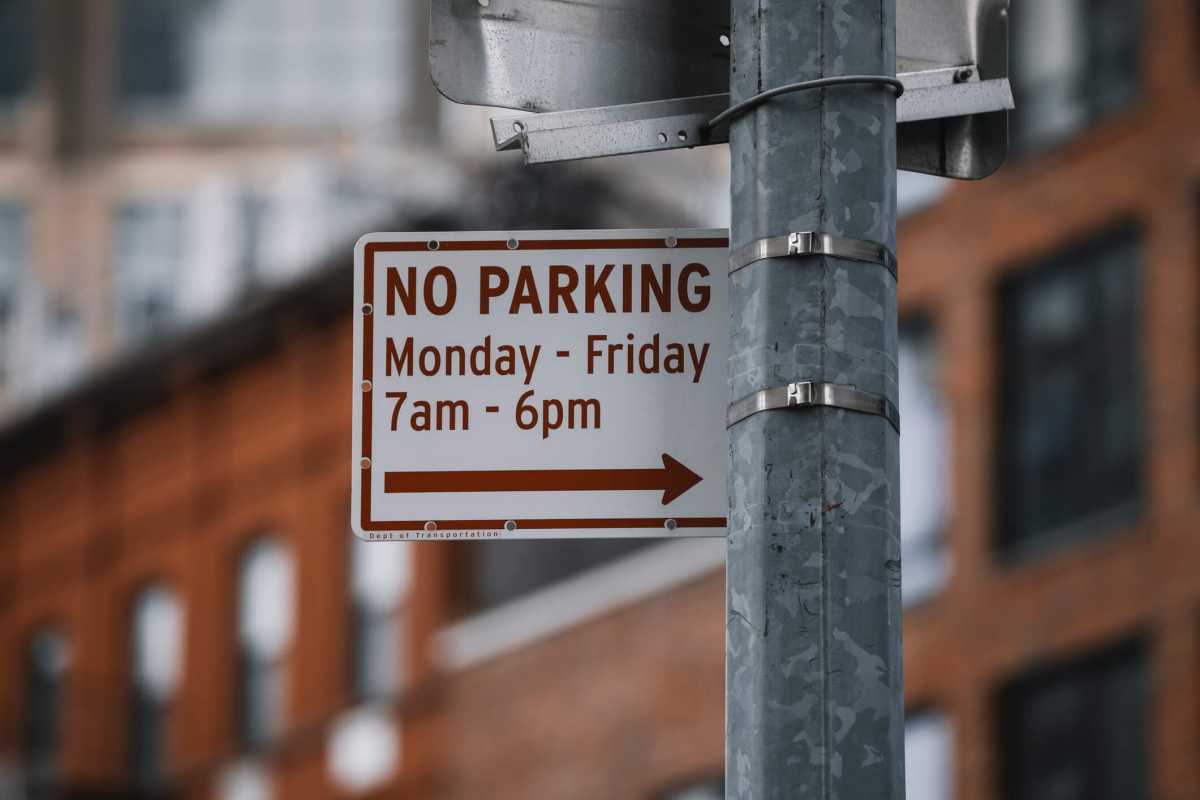
Creating daylighting is a costly job that has an estimated price tag in the billions, according to the DOT. City officials said the daylighting bill, if enacted, could eliminate around 300,000 parking spaces in the five boroughs.
Meanwhile, the proposed universal daylighting plan has faced pushback from area politicians concerned about the significant loss of parking spaces across the city.
Vito Fossella, Staten Island’s borough president, called the proposal a “one-size-fits-all” approach that will “make things worse” for drivers in his borough and across the city.
“If the goal is to make things safer, then identify those intersections that present a problem,” the beep said. “It is a big mistake to impose a $3 billion parking ticket on New York City residents, for a concept that should not see daylight. We urge the city council leadership to keep this proposal in the dark.”
A NYC Council spokesperson told amNewYork that Intro. 1138 is still in the legislative process.
“The safety of pedestrians and all street users remains a top priority for Speaker Adams and the council,” the spokesperson said. “Introduction 1138 is going through the council’s legislative process, which is deliberative and allows for thorough public engagement and input.”
